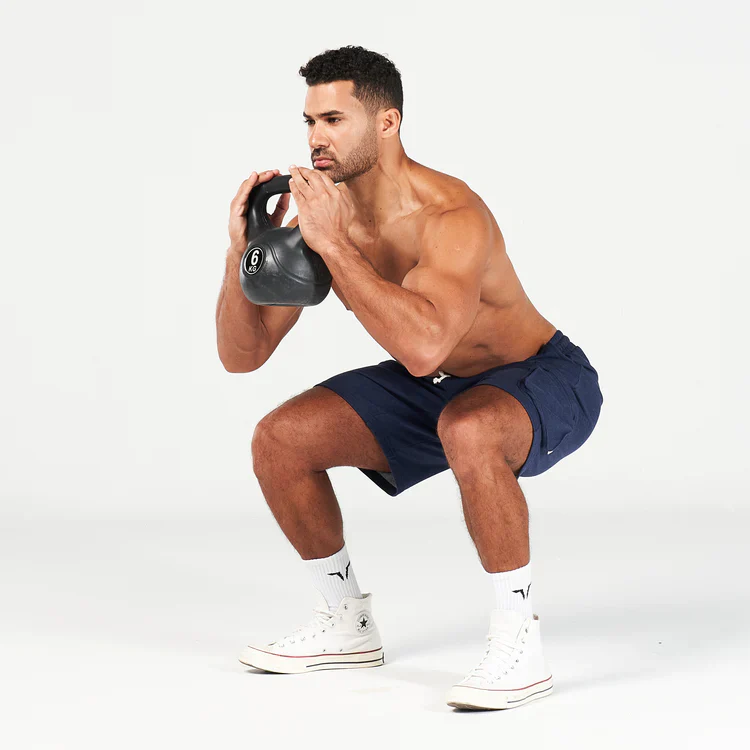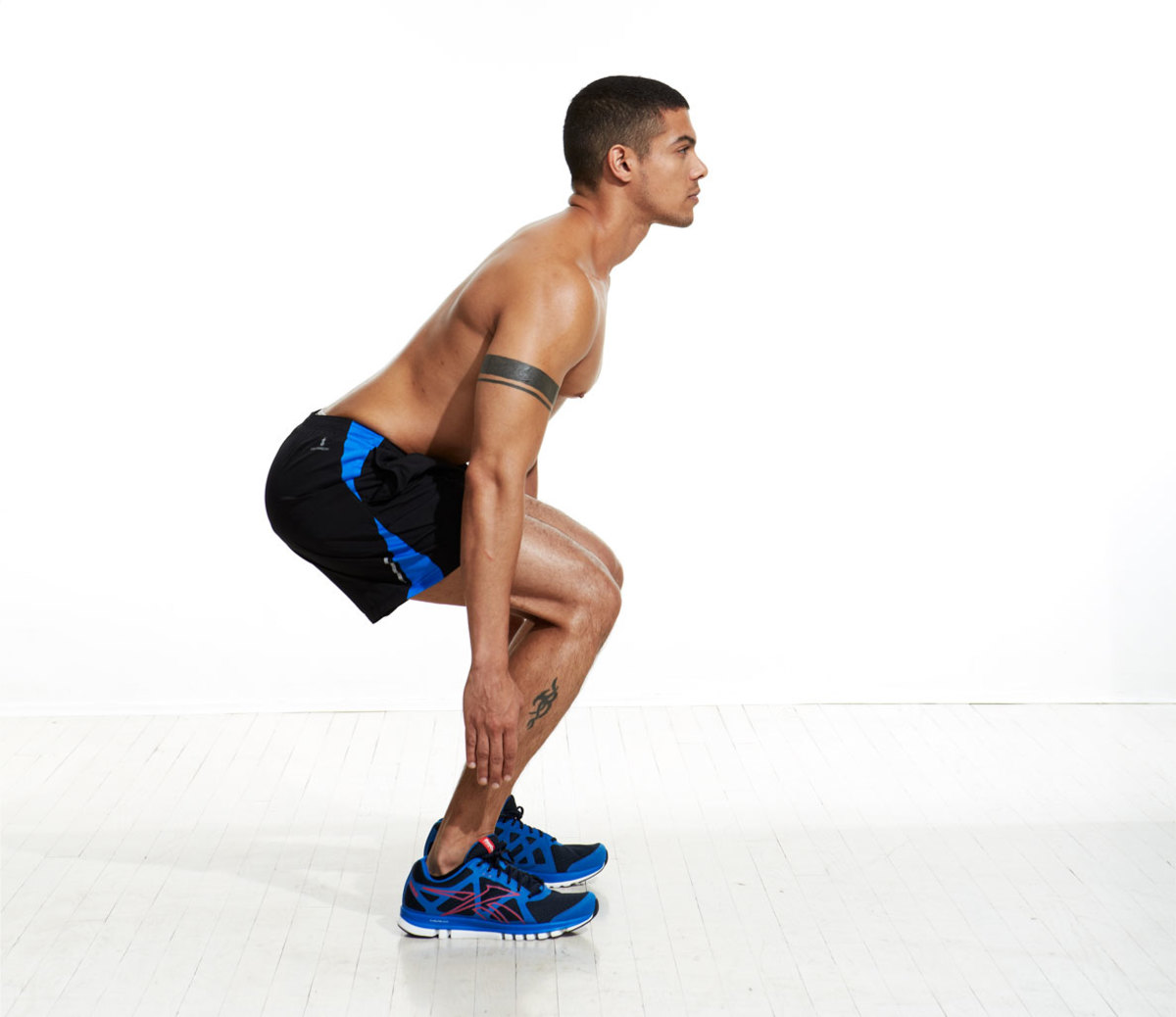Build Bigger Glutes at Home: Bodyweight and Resistance Band Workouts That Work
You don’t need a squat rack, barbell, or commercial gym to build strong, muscular glutes.
As a bodybuilder, I’ll be the first to tell you — progressive overload is king. But when it comes to glute training, load is just one part of the equation.
Execution, tension, and frequency play just as big a role. And guess what? You can apply all of these principles from home — with just your bodyweight, a resistance band, and the right strategy.
Whether you’re stuck at home, traveling, rehabbing an injury, or just need a no-excuse glute day — this guide will show you how to build, shape, and activate your glutes anywhere. Let’s break it down.
Why Train Glutes at Home?
From a bodybuilder’s point of view, training at home serves three distinct advantages:
High-Frequency Training Without Burnout
Glutes are a large, high-endurance muscle group. They respond incredibly well to frequency and volume, provided recovery is managed. Home workouts let you hit glutes multiple times per week without taxing your CNS like barbell squats or deadlifts would.
Improved Mind-Muscle Connection
Without external load, you’re forced to slow things down and focus on contraction — which builds neural pathways to fire glutes more efficiently, even during heavy lifts at the gym.
Time, Flexibility, and Accessibility
No excuses. No commute. No equipment? No problem. You can train your glutes anytime, anywhere, and stay consistent even during travel, off days, or busy weeks.
💡 Use at-home glute workouts as full sessions, warmups, finishers, or recovery boosters between heavy gym days.
Best Bodyweight Glute Exercises (No Equipment)
These movements rely on hip extension, abduction, and stability to create mechanical tension and fatigue without load. Control and tempo are key.
Glute Bridge
- Execution: Lie on your back, knees bent, feet flat, push through heels to raise hips.
- Tip: Squeeze glutes hard at the top and avoid overextending your spine.
- Variation: Elevate feet on a step for greater range of motion.
Frog Pumps
- Soles of feet together, knees out wide, pushing hips up repeatedly.
- Focus: Shortened glute contraction. Use high reps (20–30+).
- Perfect as a finisher or activation drill.
Single-Leg Glute Bridge
- One foot flat, other leg extended. Bridge up on one leg.
- Benefits: Increases difficulty, builds symmetry, targets stabilizers.
- Tip: Don’t rush. Keep hips level and movement slow.
Donkey Kicks
- Hands and knees position, extend one leg back and up, knee bent.
- Focus: Glute max contraction at the top.
- Tip: Pause and squeeze at the top for 1–2 seconds. No swinging.
Step-Ups (Using Chair or Stairs)
- Step up with control, drive through your heel, control the descent.
- Benefits: Builds unilateral strength, glute-quads synergy.
- Tip: Use slow eccentric tempo to increase time under tension.
Best Resistance Band Glute Exercises (Minimal Equipment)
Adding a mini band or loop increases tension at peak contraction and can make home training brutally effective. Perfect for all levels — just adjust band resistance.
Banded Glute Bridge / Hip Thrust
- Place a band just above the knees.
- Push knees out as you bridge up, increasing glute activation.
- Tip: Keep constant tension in the band. Don’t let knees cave in.
Banded Lateral Walk
- Stand with a band around your thighs or ankles, knees slightly bent.
- Step sideways slowly while keeping tension.
- Focus: Glute medius (side glutes) and stability.
Standing Banded Kickback
- Anchor the band around a sturdy object or use a loop band on ankles.
- Kick back and up in a slow, controlled arc.
- Focus: Glute max isolation with low joint stress.
Banded Clamshell
- Lie on your side, band above knees, feet together, open knees.
- Great for beginners to build external rotation control.
- Tip: Shorten range of motion slightly and prioritize tension.
Fire Hydrant (Bodyweight or Banded)
- Similar setup to donkey kick, but leg moves laterally.
- Works glute medius and rotators.
- Add a band above the knees to increase difficulty.
Sample At-Home Glute Workouts (Beginner to Advanced)
Each workout below is designed with purposeful sequencing, focusing on activation, overload, and metabolic fatigue. Adjust reps and sets based on your level.
🔹 Beginner Bodyweight Glute Builder (20–25 min)
Perfect for new lifters or a light activation day.
- Glute Bridge – 3 sets x 15 reps
- Step-Up – 3 sets x 10/leg
- Donkey Kick – 3 sets x 12/leg
- Frog Pumps – 2 sets x 30 reps
Tip: Rest 30–45 seconds between sets. Focus on perfect execution.
🔹 Intermediate Banded Glute Burner
Build shape, burn, and activation with higher reps and short rest.
- Banded Glute Bridge – 3 sets x 20 reps
- Lateral Band Walk – 3 sets x 12 steps each side
- Standing Kickback (Banded) – 3 sets x 15/leg
- Fire Hydrant (Banded) – 3 sets x 15/side
- Seated Abduction (Banded) – 2 sets x 25 reps
Tip: Superset 2–3 movements for intensity.
🔹 Glute Specialization Circuit (Minimal Rest)
Push glutes to fatigue. Great for frequency-focused programs.
3 Rounds, no rest between moves:
- Banded Glute Bridge x 20
- Clamshell x 15/side
- Lateral Walk x 10/side
- Donkey Kick x 12/side
- Frog Pump x 25
Rest 1–2 minutes between rounds. Stretch after.
Programming Tips from a Bodybuilder’s Playbook
Your at-home glute training needs structure. Treat these sessions with the same intent and progression as you would barbell lifts.
Frequency
- 2–4x per week is ideal for glute hypertrophy.
- Mix intensity: some heavy-feeling band work, some pump-focused high reps.
Tempo is Your Friend
- Slow down the eccentric (3 seconds down).
- Pause 1–2 seconds at peak contraction.
- Tension builds muscle — not speed.
Rest Periods
- 30–60 seconds for most movements.
- For circuits, limit rest to stay metabolically challenged.
Progression Still Matters
- Add reps each week.
- Increase time under tension.
- Upgrade to a thicker band or harder variation.
📓 Track your home workouts like your gym lifts. Growth requires progressive stimulus — even without iron.
Mistakes to Avoid in Home Glute Training
Even seasoned lifters can mess up bodyweight work by treating it like fluff. Here’s what to avoid:
Rushing Reps
- Mindless reps with zero squeeze = wasted effort.
- Slow down, squeeze harder, and contract intentionally.
Zero Band Tension at Start
- A common mistake is letting the band slack at the bottom.
- Solution: Keep knees slightly out and glutes engaged throughout.
No Progressive Overload
- If you’re doing the same rep ranges for weeks — you’re plateauing.
- Progress weekly. Add volume, reps, tension, or variation.
Treating Home Workouts Like Afterthoughts
- These sessions matter. When executed with intent, they build real muscle.
- Approach each rep like it counts — because it does.
🏁 Final Word: Build Glutes Without the Gym
You don’t need machines or plates to build bigger glutes — you need tension, frequency, and precision. When you train with purpose, even the simplest home workouts can build the shape, strength, and size you’re chasing.
Here’s what to take away:
- Use a combination of bodyweight and resistance band exercises.
- Program with intent and progression, not randomness.
- Prioritize form, tempo, and muscle engagement.
- Train glutes multiple times per week and track your progress.
Whether you’re chasing aesthetics, athletic performance, or symmetry on stage — glutes matter. Now you have no excuse not to train them — anywhere, anytime.
🔗 Related Articles:
- Complete Glute Training Guide
- Best Glute Exercises for Mass
- Glute Isolation Moves That Actually Work
- Why Your Glutes Aren’t Growing
- Barbell Hip Thrust Mastery





